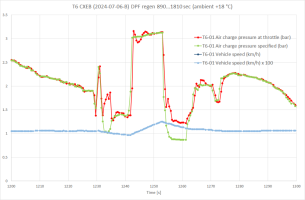During a diesel particulate filter regen, what happens to the fuel/air mixture? That would make it different to normal running.
Is it less air and more fuel? What sensors control this function?
No fault codes, no warning lights. Trying to understand an odd running condition only occuring with regen. Lack of power to pull away in 1st or reverse to the point where engine will very easily stall, terrible throttle response, above 2k rpm it takes off like a rocket. Overfueling symptoms? No noticable issues sitting at 60-70mph during regen, only if regen is still occuring at low speed.
Once DPF regen complete, normal running resumes, still achieves 39-40mpg cruising on motorway no problem.
Thanks,
Lee
Is it less air and more fuel? What sensors control this function?
No fault codes, no warning lights. Trying to understand an odd running condition only occuring with regen. Lack of power to pull away in 1st or reverse to the point where engine will very easily stall, terrible throttle response, above 2k rpm it takes off like a rocket. Overfueling symptoms? No noticable issues sitting at 60-70mph during regen, only if regen is still occuring at low speed.
Once DPF regen complete, normal running resumes, still achieves 39-40mpg cruising on motorway no problem.
Thanks,
Lee
Last edited:







